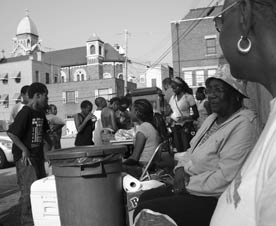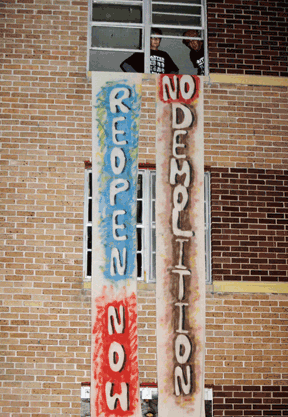Only a decade ago, subprime loans were rare. But, starting in the mid-1990s, led by Household Finance Corporation, subprime lending began surging. They comprised 8.6 percent of all mortgages in 2001, soaring to 20.1 percent by 2006. Since 2004, more than 90 percent of subprime mortgages came with exploding adjustable rates.
With interest rates low, housing prices on a steady rise, and practically no government regulation, banks and mortgage-finance companies devised high-interest, high-fee schemes to entice families to take out loans that traditional savings banks would not make.
Many borrowers who were eligible for conventional fixed-rate loans got snookered into taking subprime loans. Other borrowers were talked into taking loans whose terms they barely understood because the documents were confusing. And in many cases, lenders simply lied about the costs of the loans and whether borrowers could really afford them. Nevertheless, subprime lending is not inherently abusive.
In contrast, predatory lending involves an array of abusive practices and targets those least likely to be able to repay. Predatory lenders charge unconscionably high fees and interest rates, sometimes running well over 22 percent. Borrowers face hidden fees masked by confusing terms such as discount points, erroneously suggesting that the fees will lower the interest rates. Many of these loans have prepayment penalties that make it difficult or impossible for borrowers to refinance when interest rates decline.
Predatory Brokers and Lenders
Big mortgage finance companies and banks cashed in on subprime loans. Last year, 10 lenders—HSBC (Household Finance), New Century, Countywide, CitiMortgage, WMC Mortgage, Fremont Investment, Ameriquest, Option One, Wells Fargo, and First Franklin — accounted for 59 percent of all subprime loans, totaling almost $300 billion. Executives and officers of some of these companies cashed out before the market crashed, most notably Angelo Mozilo, the former CEO of Countrywide Financial, the largest subprime lender. Mozilo made more than $270 million in profits selling stocks and options from 2004 to the beginning of 2007. Between 2004 and 2006, the three founders of New Century Financial, the second-largest subprime lender, together realized $40 million in stock-sale profits.
Many of the lenders were legitimate operations providing a market for credit-risky people. But others sought huge profits through unsavory means. Unfettered by government regulation, they flouted banking standards.
Lenders typically have salespeople who hound vulnerable families for months, soliciting and encouraging them to take out a loan to buy a house or to refinance. But there are also independent mortgage brokers who operate in the netherworld of the lending industry, earning fees for bringing borrowers to lenders — the larger the mortgage, the larger the fee.
Many borrowers of subprime and predatory loans are working- and middle-class families who fell victim to the country’s economic squeeze, a hardship not of their own doing, but rather a symptom of the economic trends of the Bush years, including widening economic disparities, stagnant wages, and an increase in poverty. At a time when soaring housing prices were out of whack with the rest of the economy, subprime loans were the only way they could achieve the American Dream of owning a home. But when they could no longer keep up their mortgage payments, they had no safety net. They began skipping their monthly mortgage payments, especially after the ARMs kicked in with higher interest rates, as high as a 30-percent spike for some borrowers.
Not all subprime borrowers are innocent victims. Some were speculators, seeking to profit from the real-estate housing bubble with their eyes wide open. They expected to rent their houses or quickly flip them to another buyer in a rising housing market. Others were simply living dangerously above their means, taking on too much debt and occupying houses that, by any reasonable standard, they couldn’t really afford.
Investors
At the other end of the financial services industry are the investors, people, and institutions that borrowers never see, but who made the explosion of subprime and predatory lending possible.
Subprime lenders didn’t hold onto these loans. Instead, they sold them — and the risk — to investment banks and investors who considered these high-interest-rate loans a goldmine. According to various sources, including MSNBC, The Washington Post, and First American LoanPerformance, by 2007, the subprime business had become a $1.5 to 2 trillion global market for investors seeking high returns. Because lenders didn’t have to keep the loans on their books, they didn’t worry about the risk of losses.
Wall Street investment firms set up special investment units, bought the subprime mortgages from the lenders, bundled them into “mortgage-backed securities,” and for a fat fee, sold them to wealthy investors worldwide. According to The New York Times, Bank of China Ltd. held almost $9.7 billion of securities backed by U.S. subprime loans. The major ratings agencies gave subprime securities top ratings, failing to evaluate the real risks.
With the bottom falling out of the subprime market, more than 80 mortgage companies have gone under since the middle of 2007. Major Wall Street firms took huge loses as the crisis ripped into foreign money markets, from London to Shanghai. Lehman Brothers underwrote $51.8 billion in securities backed by subprime loans in 2006 alone. As of September 2007, 20 percent of those loans were in default, The New York Times reported. Similarly, about one-fifth of the subprime loans packaged by Morgan Stanley, Barclays, Merrill Lynch, Bear Stearns, Goldman Sachs, Deutsche Bank, Credit Suisse, RBS, Countrywide, JP Morgan, and Citigroup were 60 or more days delinquent, in foreclosure, or involved homes that have already been repossessed.
It All Started with Deregulation
There was a time, not too long ago, when Washington did regulate banks. The Depression triggered the creation of government bank regulations and agencies, such as the Federal Deposit Insurance Corporation, the Federal Home Loan Bank System, Homeowners Loan Corporation, Fannie Mae, and the Federal Housing Administration, to protect consumers and expand homeownership. After World War II, until the late 1970s, the system worked. The savings-and-loan (S&L) industry was highly regulated by the federal government, with a mission to take people’s deposits and then provide loans for the sole purpose of helping people buy homes to live in. Washington insured those loans through the FDIC, provided mortgage discounts through FHA and the Veterans Administration, created a secondary mortgage market to guarantee a steady flow of capital, and required S&Ls to make predictable 30-year fixed loans. The result was a steady increase in homeownership and few foreclosures.





This issue really gets hot with me. I used to live in Chicago, before I lost my home, and now, I am living in Wisconsin Dells where home prices are not even that low, yet. They are better, but there’s a trade off between what I live in before and what I live in now.
Greedy bankers and investors take too much, including my house, my friends’ houses, and many other people’s houses. Enough is enough
Johnathan who operates a Wisconsin Dells Hotels consulting service.